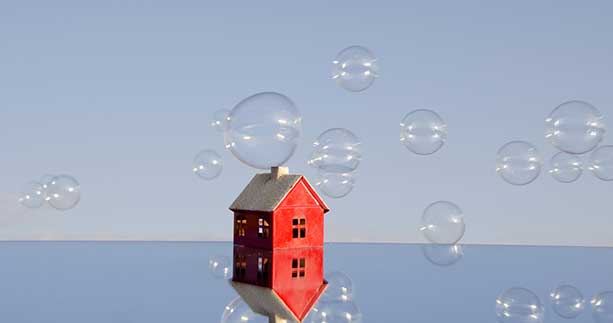Like Freddie Krueger in the Nightmare on Elm Street movies, the specter of a Housing Bubble keeps popping up in the media, spooking those poor souls who remember how badly the last movie ended. But are we really about to see a sequel to the last boom and bust cycle? I don’t think so, for a number of reasons.
Reason #1: Home prices are about where they should be. The folks at Zillow put out an interesting report showing that if we hadn’t gone through the boom and bust cycle, and home prices had simply risen at the historic average of about 3.6% a year, they’d be almost precisely where they are today.
Reason #2: We’re experiencing a bounce, not a bubble. According to Case Shiller, home prices fell by about 35% from peak to trough. The same index is reporting a 13% year-over-year increase. On average, prices are still off by more than 20% from the peak. And the markets experiencing the highest levels of price appreciation are the markets that suffered the most dramatic price depreciation during the bust – cities that saw values fall 40%, 50%,even 60%. The current increases are indicative of markets returning to normal.
Reason #3: Rising interest rates appear to be slowing home price appreciation. According to Trulia, asking prices dropped in July on both a year-over-year and quarter-over-quarter basis. Mortgage rates are likely to continue to rise, which historically has been a damper on home prices.
Reason #4: Supply and demand are beginning to balance out. All categories of inventory have been unusually low: existing homes, where more than 20% of borrowers were in a negative equity position; distressed homes, which had been delayed due to regulatory and legislative delays; and new homes, which were at 30-year lows. As prices go up, more existing homes are entering the market. Distressed properties – often short sales – are beginning to come to market. And new home construction has begun to climb. These trends could lead to a very different dynamic a year from now.
Reason #5: Credit remains tight. One of the major culprits in the creation of the last bubble was easy credit. Under-qualified borrowers were given loans they couldn’t afford on over-valued homes. The lending pendulum swung to the opposite extreme – and appears to be stuck there for the time being. Even well-qualified borrowers are having a hard time getting a loan, and appraisals often come in at prices lower than what buyers are willing to pay. As QM rules are fully implemented in 2014, it’s likely that loans will be even more difficult to secure.
While double digit price gains can’t go on indefinitely without creating a bubble, what we’re seeing now is a recovery accelerated by low inventory and high levels of investor activity. A few markets may be overheating a bit, but we’re already seeing market forces cool things off. So eat your popcorn and enjoy the movie – Nightmare on Main Street won’t be playing any time soon.






